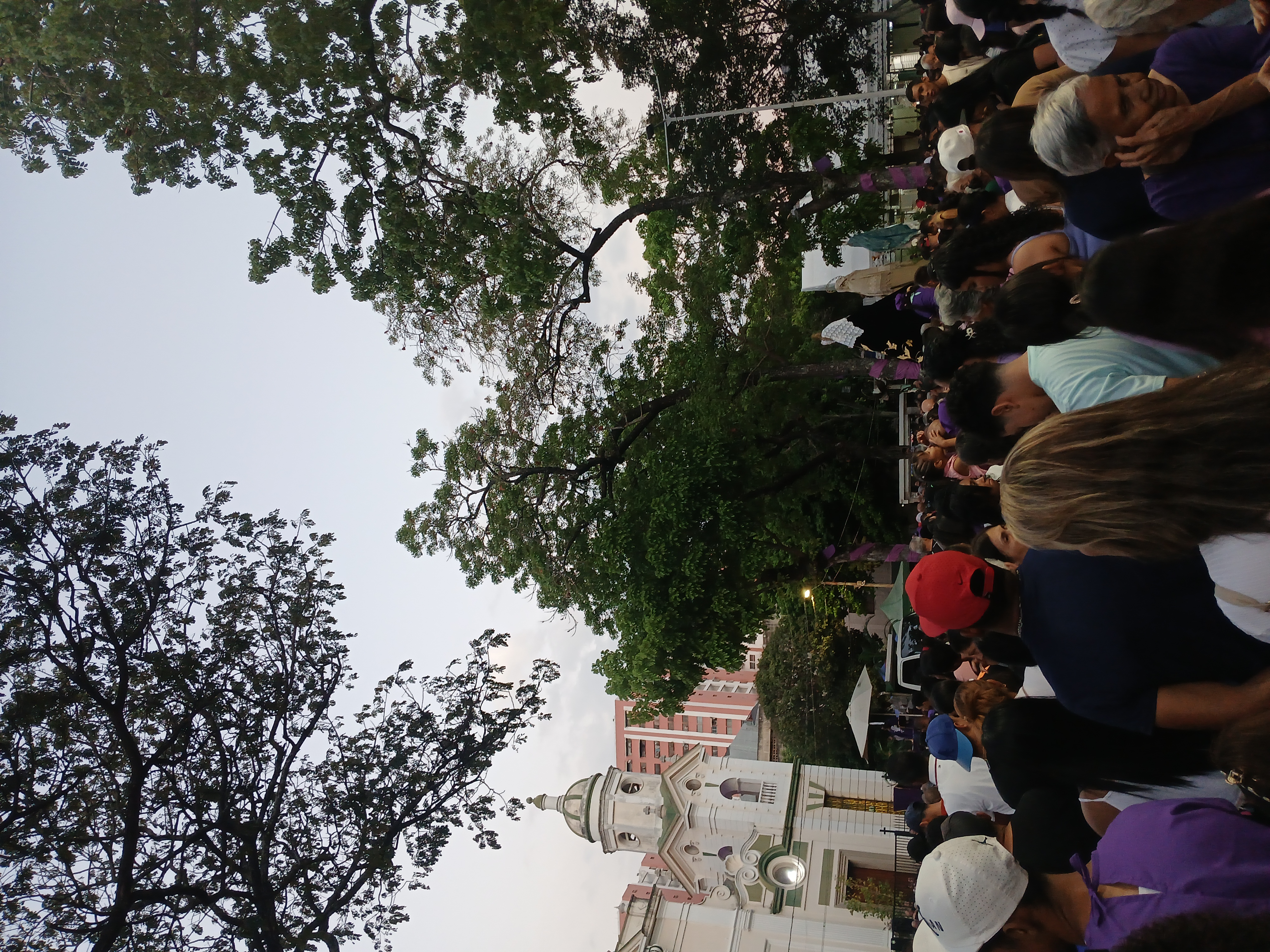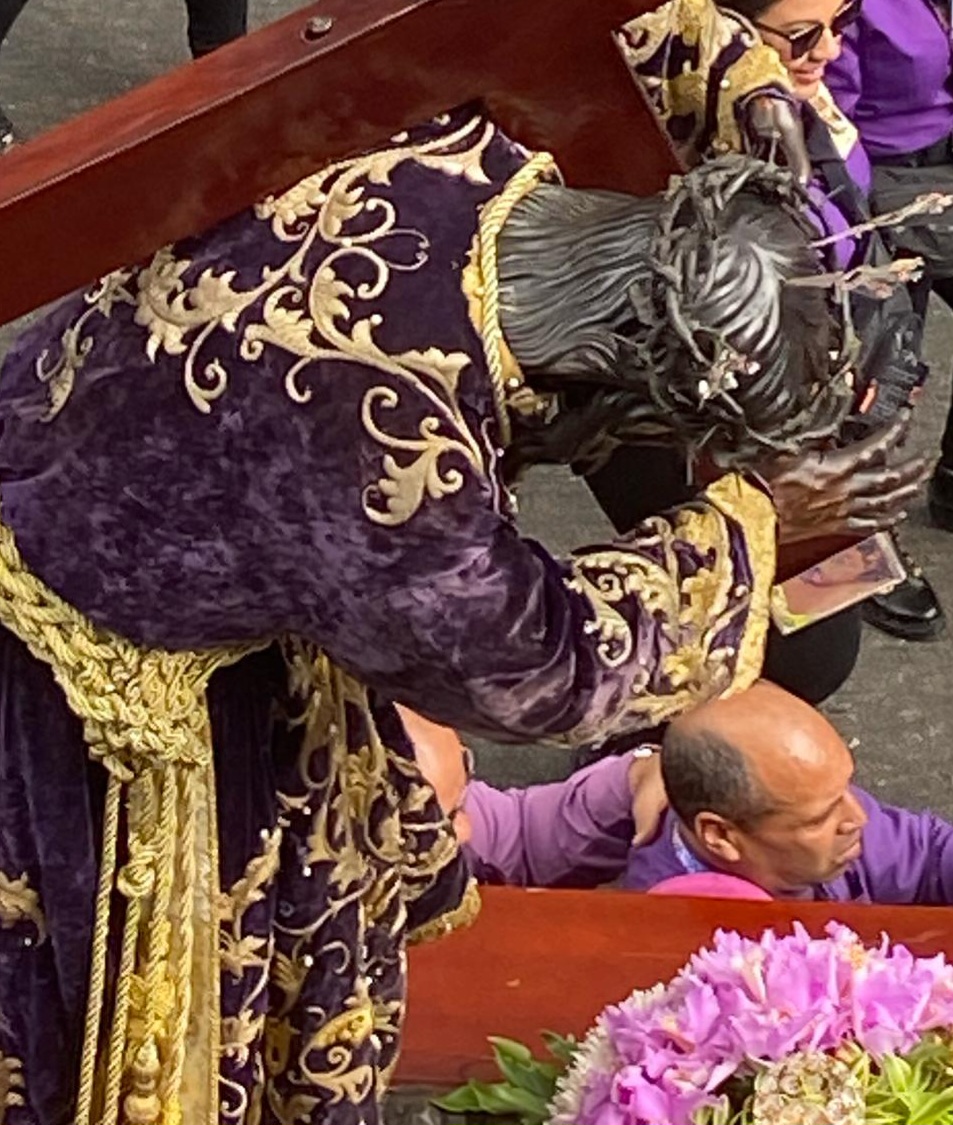La comunidad #hiveargentina nos hace una invitación a compartir lo que significa la Semana Santa y las tradiciones que acompañan a esta conmemoración de los últimos días de Jesús en la tierra
Quiero comenzar por decir que mis primeros recuerdos de la Semana Santa son cuando de niña acompañaba a mi abuela a recorrer los siete templos de Caracas, el día jueves santo.
Ibamos mis tres hermanas y yo, agarradas de mi abuela, entre la multitud que asistía a las tradiciones de la Semana Mayor. Aún cuando a mi edad no comprendía la razón de este recorrido, me gustaba conocer las iglesias, escuchar los cantos y ver las imágenes de los santos.
Con mi madre asistíamos el domingo de ramos a la Iglesia de la parroquía El Valle donde vivíamos en Caracas a buscar la palma bendita, con la cual se hacía una cruz que se colgaba en la puerta de entrada de la casa como protección. Este era el inicio de toda una semana de actividades religiosas.
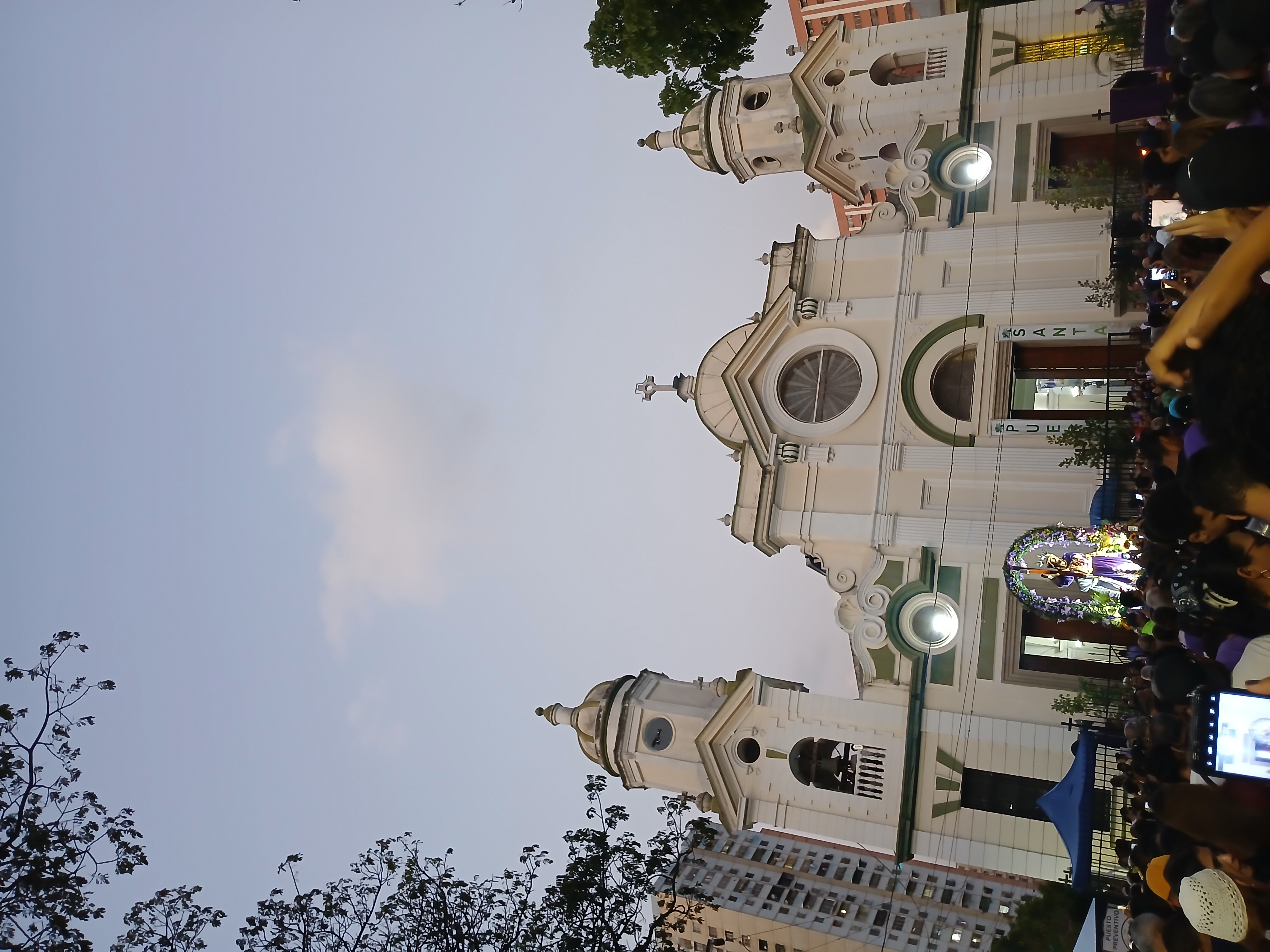
Iglesia de El Valle y la plaza.
Desde el lunes hasta el viernes santo ibamos a las procesiones, en esa época todavía existian las calles empedradas y las casas coloniales con techos de tejas, que estaban alrededor de la iglesía. Por allí se llevaban los santos en hombros de los hombres de acuerdo al día que correspondiera durante la pasión de Jesús. Iban seguidos de la multitud que alumbraba el camino con velas.
Como era costumbre las mujeres llevaban velos sobre la cabeza y mi mamá estaba muy pendiente con las velas para evitar que el fuego los quemara. Era un poco riegoso cuando las personas se aglomeraban.
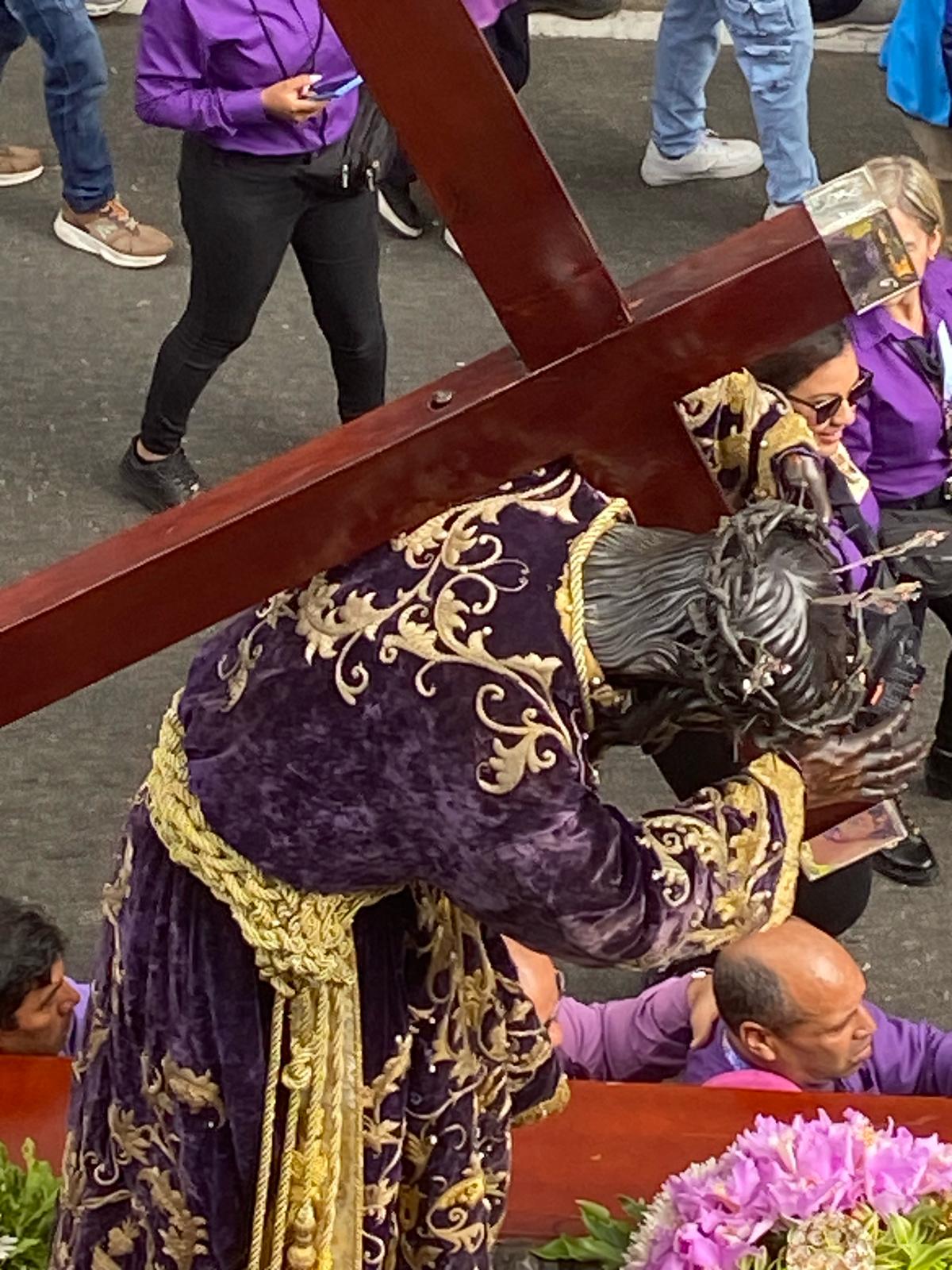
Imagen original del Nazareno de San Pablo que se mantiene en la Iglesia Santa Teresa en Caracas.
El miercoles santo es el día de la semana santa de mayor devoción para los venezolanos y sobre todo para los caraqueños pues se saca en procesión el Nazareno de San Pablo, que es el cristo llevando la cruz. Muchas personas le hacen promesas por favores recibidos y van vestidos de morado como el Nazareno.
Además existe la historia de un milagro de sanación producido en el año 1969 cuando la peste negra afecto a la población de Caracas. Se cuenta que a petición de las personas el cristo fue sacado en procesión y su corona de espinas y la cruz se enredaron con las ramas de un limonero. Alguién grito "Es un milagro". Dicen que la gente se curó con el jugo de los limones, tal como cuenta el poeta Andres Eloy Blanco en su poema "El limonero del señor". Es el poder de la fé que los creyentes sienten al pedir al cristo representado en la imagen del Nazareno.
Las antiguas calles han desaparecido al igual que las casas que fueron sustituidas por edificios, pero se sigue manteniendo la tradición de hacer las procesiones, por las avenidas y calles.
En semana santa generalmente visito a mi familia que vive en Caracas, como acostumbraba hacer con mis hijos y ahora yo sola acompaño a mis hermanas y a mi mamá a ver pasar las procesiones.
El miercoles santo nos fuimos a la plaza frente a la Iglesía y alli estaban las imágenes del Nazareno de San Pablo, la Dolorosa, que representa a la Virgen María, San Juan y Maria Magdalena, para salir en procesión. Es una tradición que se mantiene. Allí estuvimos un rato y encendimos una vela para hacer una petición al Nazareno.
Anterioremente en la casa de mis padres no se comía carne roja los dias jueves y viernes santo. Mi madre siempre cocinaba pescado y preferiblemente pescado salado. Esa costumbre aún se mantiene en el país.
En las escuelas acostumbraban hacer la representación del via crucis, el dia viernes antes de la semana santa, porque hasta ese día había actividades. Pude asistir a varias donde mis hijos participaban actuando en diferentes personajes.
Para mi la semana santa es un recordatorio de la muerte de Jesús. Por una semana se hace enfasis en su sufrimiento y las palabras que dijo a traves de estas tradiciones organizadas por la iglesia católica. Pero mas alla de esto está la importancia de su significado espiritual independiente de la religión 
Muchas gracias por leer e invito a mis amigos
@katleya y
@katleya a participar. Acá el enlace.
The hivesrgentina community invites us to share what Holy Week means and the traditions that accompany this commemoration of the last days of Jesus on earth.
My first memories of Holy Week are when, as a child, I accompanied my grandmother to visit the seven temples of Caracas on Holy Thursday.
My three sisters and I would go, holding on to my grandmother, among the crowds of people attending the traditions of Holy Week. Even though at my age I did not understand the reason for this tour, I liked to visit the churches, listen to the songs and see the images of the saints.
On Palm Sunday, my mother and I would go to the church in the parish of El Valle, where we lived in Caracas, to pick up the blessed palm, which was used to make a cross that was hung on the front door of the house for protection. This was the beginning of a whole week of religious activities.
From Monday to Good Friday we would go to the processions. At that time there were still cobblestone streets and colonial houses with tile roofs, which were around the church. There the saints were carried on the shoulders of men according to the corresponding day during the passion of Jesus. They were followed by the crowd that lit the way with candles.
As was the custom, the women wore veils over their heads and my mother was very careful with the candles to prevent the fire from burning them. It was a bit risky when people were crowded together.
Holy Wednesday is the day of Holy Week of greatest devotion for Venezuelans and especially for the people of Caracas, because the Nazarene of San Pablo, which is the Christ carrying the cross, is taken out in procession. Many people make promises for favors received and are dressed in purple like the Nazarene.
There is also a story of a healing miracle that took place in 1969, when the black plague affected the population of Caracas. It is said that, at the request of the people, the Christ was taken out in procession and his crown of thorns and the cross became entangled with the branches of a lemon tree. Someone shouted "It is a miracle". They say that the people were cured with the juice of the lemons, as the poet Andrés Eloy Blanco tells in his poem "El limonero del señor" (The Lord's Lemon Tree). It is the power of faith that believers feel when asking the Christ represented in the image of the Nazarene.
The old streets have disappeared, as well as the houses that were replaced by buildings, but the tradition of making the processions through the avenues and streets is still maintained.
During Holy Week I usually visit my family who live in Caracas, as I used to do with my children, and now I go alone with my sisters and my mother to watch the processions.
On Holy Wednesday we went to the square in front of the church and there were the images of the Nazarene of St. Paul, the Dolorosa, which represents the Virgin Mary, St. John and the Magdalene, to go out in procession. It is a tradition that is maintained.
Previously in my parents' house we did not eat red meat on Holy Thursday and Good Friday. My mother always cooked fish and preferably salted fish. That custom is still maintained in the country.
In the schools they used to represent the Stations of the Cross on the Friday before Holy Week, because until that day there were activities. I was able to attend several where my children participated acting in different characters.
For me, Holy Week is a reminder of the death of Jesus. For a week the emphasis is on his suffering and the words he said through these traditions organized by the Catholic church. But beyond this is the importance of its spiritual significance independent of religion.
Thank you very much for reading and I invite my friends
@katleya and
@katleya to participate. Here is the [link]
https://hive.blog/hive-161447/@hiveargentina/sememana-santa-initiativa-espeng-4ka
Todas las fotografías son propias.
La imagen de la presentacion la edité en Canva.
La traducción al ingles la hice en
www.deepl.com.
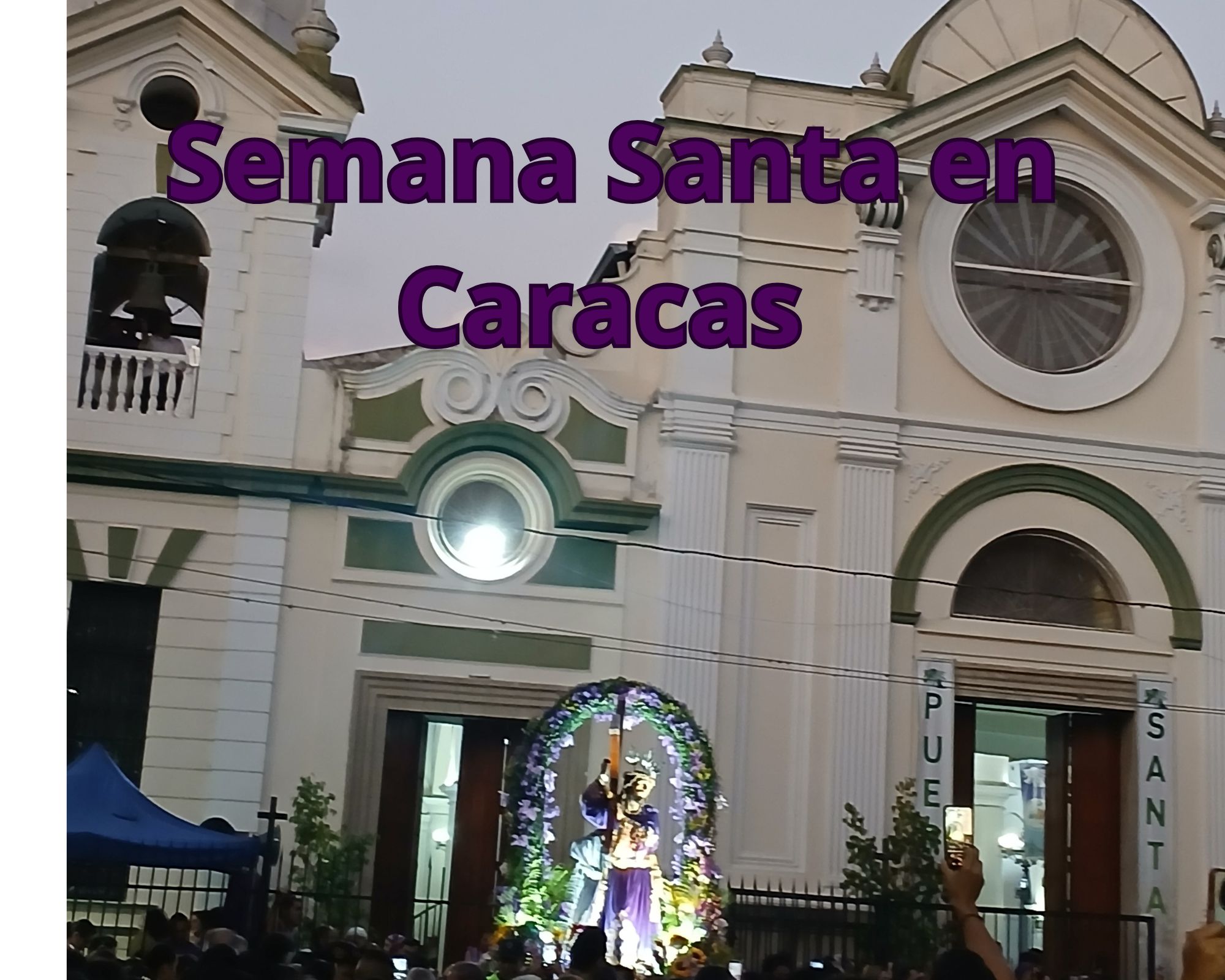
 Iglesia de El Valle y la plaza.
Iglesia de El Valle y la plaza.




